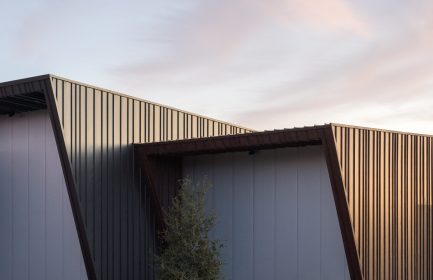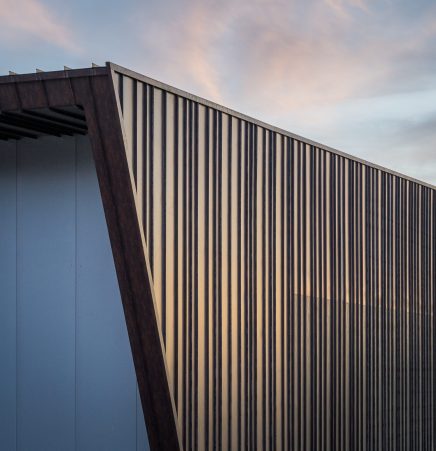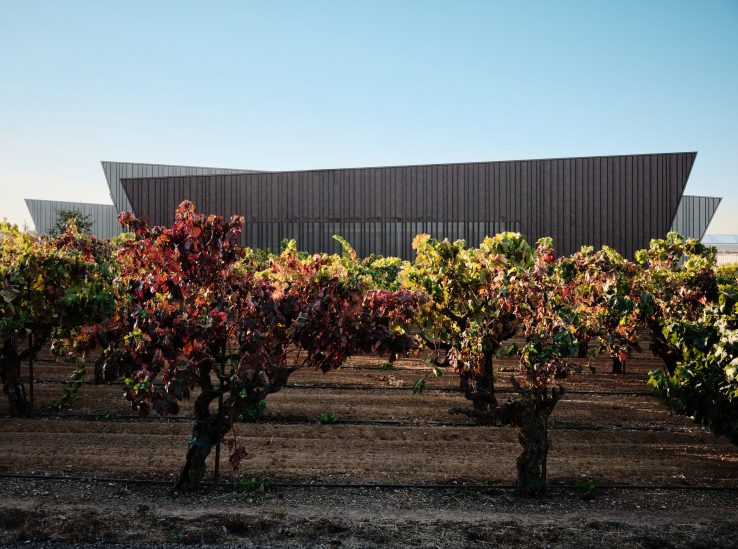
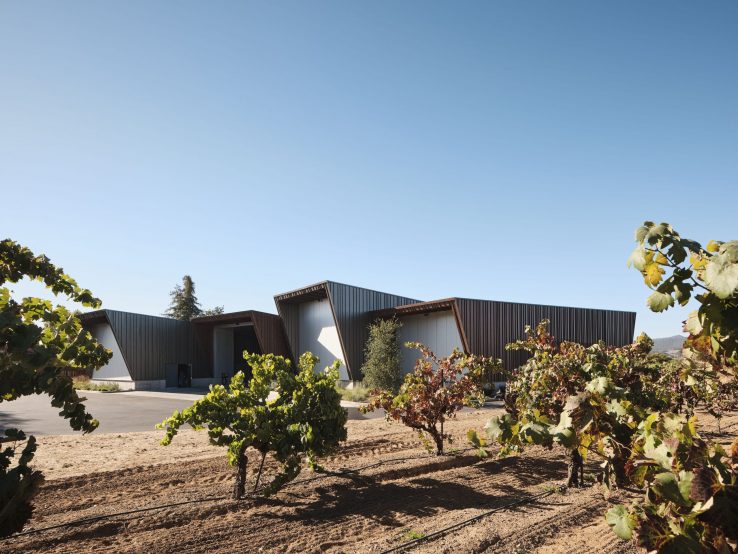
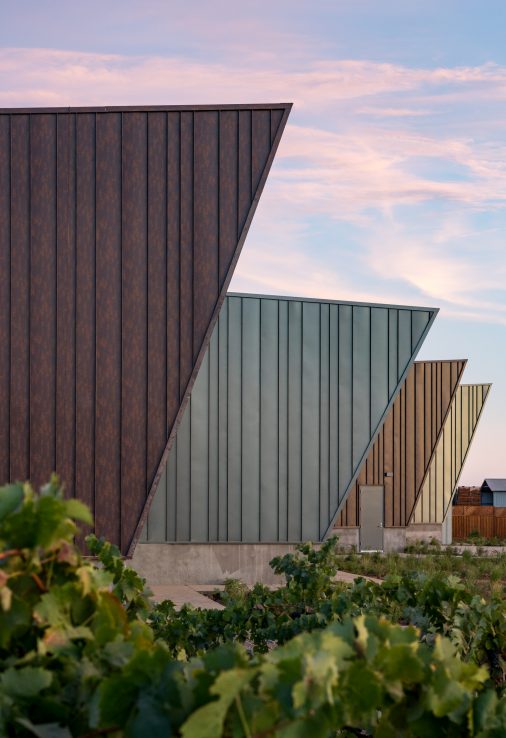
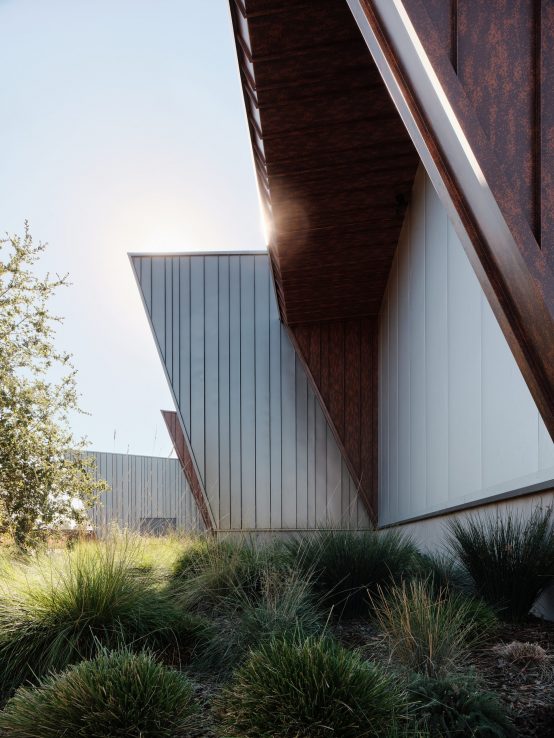
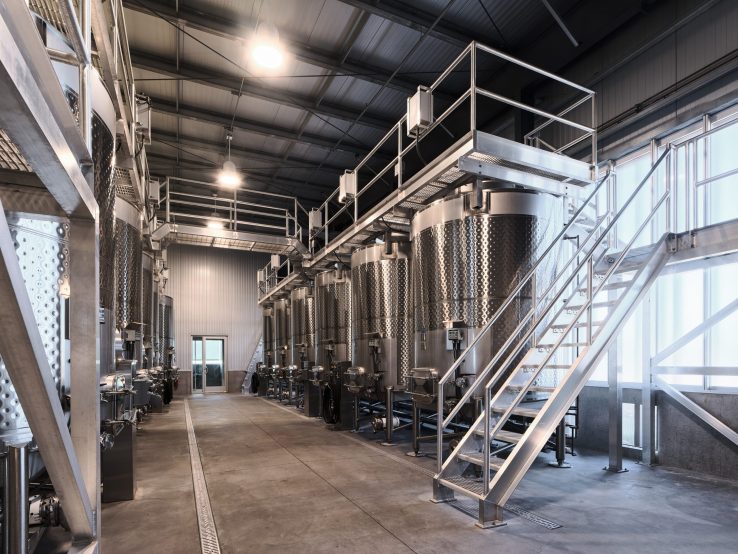
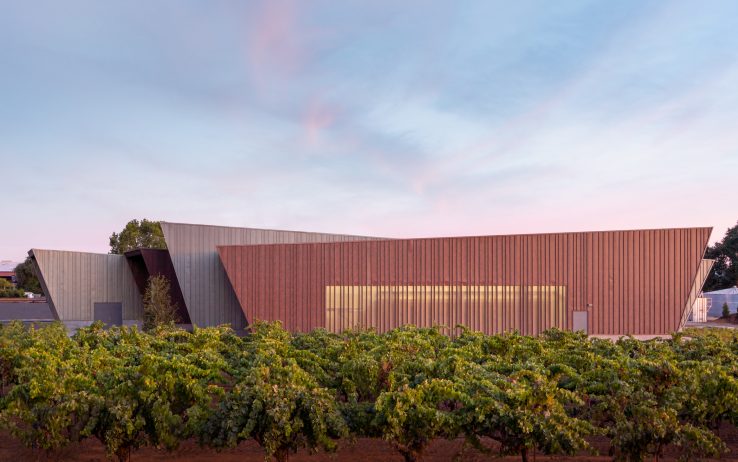






Through his unique approach to making wine, Jesse Katz is breaking new ground in the Sonoma Valley. One of the country’s most exciting young winemakers, Jesse was selected as a “rising star” byWine Spectatorwho is “changing the way the world drinks wine.” He is the son of world-renowned photographer Andy Katz who, through his photographs, has changed the way the worldseeswine.

Set on the valley floor, along the less-traveled Old Redwood Highway to the east of the Sonoma Mountains, the site enjoys a distinctive vantage point that capitalizes upon the rich soils of the creek-fed site, the fog-cooled micro-climate and the views of the mountain ranges to both the east and west.
The project comprises two distinct elements: a large production winery, and a more intimate hospitality building to host curated tastings and events. For both the production winery and the hospitality building, we filtered our design process through the exploration of the camera – specifically the aperture of a lens – as a filter for experience. Although the two structures are very different in scale and massing, the design solution for each emerged from the exploration of the elements of an aperture, and the possibilities that emerge from reassembling those elements in varying ways. Like the art of photography, architecture is an intellectual and visual exercise in perspective.
The 20,000-square-foot production winery is driven primarily by functionality. We began the design process by exploring the shape of an aperture, which takes the form of a hexagon. To minimize the visual impact of a large structure, we deconstructed the aperture into separate elements, manipulating them and reassembling them into connected structures that became the winery production building. The six sides of the aperture became the multiple rooflines on this collection of structures. To respect the building’s agricultural context, we used rustic materials that relate to the land, sheathing the buildings simply in a darkened metal that approximates the effect of aging corten steel in a more cost effective way.
